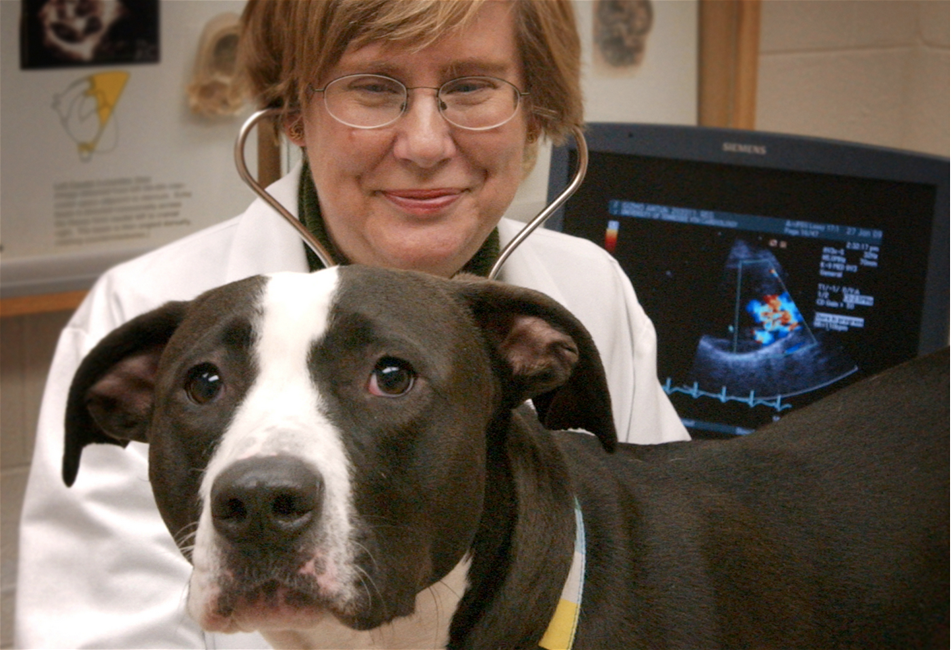Exploring the Differences Between CT Scans For Dogs and CT Scans For Animals}
The Duty of Ultrasound and CT Check in Modern Vet Practices: Insights From Experienced Professionals
In contemporary veterinary practices, ultrasound and CT scans greatly enhance diagnostic capabilities. These imaging techniques provide crucial insights right into animal health, leading treatment decisions. Experienced specialists identify the special advantages of each modality. Ultrasound uses real-time evaluations, while CT scans supply complex physiological details. Understanding their functions and applications raises vital inquiries about their effect on individual results and the future of vet diagnostics. What understandings can be acquired from their incorporated usage?
Understanding Ultrasound in Vet Medicine
Ultrasound is a vital analysis device in vet medicine, offering a non-invasive approach to envision internal frameworks. This imaging strategy uses high-frequency sound waves to develop real-time pictures of cells and body organs, permitting vets to examine conditions without surgical treatment. Usual applications consist of examining the heart, liver, kidneys, and reproductive body organs, in addition to keeping an eye on pregnancies.The procedure is relatively quick and can be performed in various setups, making it an obtainable alternative for vets. Unlike radiography, ultrasound provides comprehensive details regarding soft tissues and blood circulation, which is crucial for exact diagnoses.Veterinary specialists count on ultrasound to find problems such as growths, cysts, and liquid build-up. Its ability to guide biopsies and various other procedures further boosts its utility in clinical technique. By using a safe and reliable means to analyze internal makeup, ultrasound has come to be a foundation of modern vet diagnostics.
The Benefits of CT Checks for Animal Diagnostics
CT scans deal significant benefits in vet diagnostics by supplying enhanced precision in recognizing interior problems (Board Certified Veterinary Cardiologist). As a non-invasive imaging strategy, they guarantee the safety and security and comfort of pets throughout assessments. In addition, CT scans promote an extensive analysis of interior frameworks, permitting a lot more effective treatment preparation
Boosted Diagnostic Precision
Developments in imaging modern technology have substantially boosted analysis precision in veterinary medicine, particularly with using CT scans. These scans supply in-depth cross-sectional pictures of an animal's inner frameworks, allowing veterinarians to identify problems with precision. The high resolution and three-dimensional capacities of CT imaging assist in the detection of conditions such as growths, cracks, and inner blood loss that might be missed with typical imaging approaches. Additionally, CT scans can assist in pre-surgical planning by using a thorough view of anatomical connections. This degree of information not just improves the accuracy of diagnoses however additionally aids in customizing reliable therapy plans. The assimilation of CT modern technology right into veterinary practices is transforming the landscape of pet medical care, boosting results for individuals.
Non-Invasive Imaging Method
The introduction of non-invasive imaging techniques has actually revolutionized pet diagnostics, with CT checks arising as a popular tool in veterinary practices. These scans provide high-resolution, cross-sectional photos of a pet's internal structures, permitting vets to examine complicated conditions without the demand for invasive procedures. The advantages of CT scans include their ability to spot lumps, cracks, and internal blood loss with remarkable precision. In addition, they assist in the assessment of soft cells and organs, enhancing analysis capacities. The rate of CT scanning enables fast decision-making, which is important in emergency circumstances. By minimizing stress and anxiety and pain for the pet, CT scans add to a much more humane approach to diagnostics, eventually enhancing treatment results and progressing vet care.
Comprehensive Internal Analysis
A comprehensive interior analysis is necessary for accurate diagnosis and reliable therapy in vet medication. CT scans offer significant advantages in this respect, providing thorough cross-sectional pictures of a pet's internal structures. This sophisticated imaging method boosts visualization of intricate physiological areas, enabling veterinarians to recognize problems such as growths, cracks, and inner blood loss with better precision. On top of that, CT scans help with the analysis of conditions that might be challenging to diagnose through standard methods. The rate and precision of CT imaging additionally add to prompt treatments, boosting client end results. As vet methods progressively integrate CT technology, the benefits of substantial interior analyses come to be noticeable, enhancing the importance of this tool in contemporary vet diagnostics.
Contrasting Ultrasound and CT Imaging Techniques
While both ultrasound and CT imaging offer essential roles in veterinary diagnostics, each method provides unique benefits and constraints that can affect scientific decision-making. Ultrasound is specifically valued for its real-time imaging capacities, permitting vets to observe vibrant physical processes. This technique is non-invasive, mobile, and does not entail ionizing radiation, making it a more secure alternative for both medical professionals and pets. Nonetheless, ultrasound might have constraints in envisioning certain anatomical structures or deep tissues.Conversely, CT imaging supplies comprehensive cross-sectional sights of the body, allowing for specific localization of problems. It masters evaluating complicated body organs and structures, particularly in the thorax and abdominal area. CT scans need sedation or anesthesia in lots of cases and entail exposure to ionizing radiation. Inevitably, the choice in between ultrasound and CT depends on the details scientific scenario, the area of interest, and the seriousness of the diagnostic demands.
Instance Researches: Successful Diagnoses With Imaging
Case research studies illustrate the significant improvements in diagnostic precision achieved via sophisticated imaging innovations like ultrasound and CT scans in vet techniques. These improvements not just enhance the detection of different conditions yet also help with prompt and effective therapy plans. Assessing details cases can highlight the transformative effect of these imaging strategies on veterinary medicine.
Diagnostic Precision Improvements

Imaging Innovation Advancements
As vet imaging innovation remains to advance, its effect on analysis click this link abilities comes to be progressively apparent. Recent case research studies highlight the successful application of sophisticated ultrasound and CT check methods in determining intricate problems. As an example, a veterinary center utilized high-resolution CT scans to diagnose a rare form of lung cancer cells in a pet, which conventional imaging had missed. An ultrasound exam exposed an abdominal mass in a cat, triggering timely surgical treatment and a favorable end result. These innovations not just improve diagnostic accuracy but also make it possible for vets to create targeted treatment strategies. By leveraging sophisticated imaging innovations, veterinary specialists are substantially improving person care, leading to much more efficient monitoring of numerous wellness conditions in pets.
The Duty of Imaging in Emergency Situation Veterinary Care
Imaging plays a necessary duty in emergency situation vet treatment, providing vets with crucial information needed to make quick, informed choices. In immediate scenarios, techniques like ultrasound and CT scans make it possible for practitioners to swiftly analyze a pet dog's interior frameworks, identifying critical conditions such as interior blood loss, cracks, or organ abnormalities. These imaging techniques enable for real-time evaluations, promoting timely treatments that can be life-saving. As an example, ultrasound is very useful for assessing soft tissue injuries and conditions like liquid buildup, while CT scans deal in-depth pictures of complicated physiological frameworks, vital for diagnosing trauma situations. The rate and precision of these imaging methods improve the veterinarian's capability to devise reliable treatment strategies, making sure the best possible results for their people. The combination of sophisticated imaging innovations into emergency vet methods is not only advantageous yet increasingly necessary, as it enhances diagnostic capabilities and improves overall pet treatment throughout vital moments.

Training and Competence in Veterinary Imaging
Although innovative imaging techniques such as ultrasound and CT scans are crucial for efficient vet care, the successful execution of these technologies greatly depends on the training and know-how of vet professionals. Efficient use imaging tools calls for extensive understanding of composition, pathology, and the concepts underlying each technique. Veterinary experts need to undergo specialized training to precisely translate imaging outcomes, which is essential for detecting conditions and intending treatment.Certifications and continuing education in veterinary imaging enhance the skills of professionals, allowing them to remain upgraded with technical developments. Partnership in between vets and radiologists often results in enhanced diagnostic accuracy, as experts can offer understandings right into intricate instances. On top of that, functional experience in managing imaging devices promotes self-confidence in its application. Ultimately, the quality of vet imaging services is straight associated to the level of training and knowledge possessed by the professionals utilizing these important diagnostic devices.
Future Fads in Diagnostic Imaging for Animals
With the quick innovations in modern technology, veterinary diagnostic imaging is poised for substantial advancement in the coming years. Arising trends show a shift in the direction of more portable and accessible imaging techniques, such as handheld ultrasound devices, which can improve area diagnostics. Additionally, the integration of artificial knowledge is expected to reinvent photo analysis, permitting quicker and a lot more accurate interpretations of results.Moreover, innovations in 3D imaging strategies and calculated tomography will provide vets with even more extensive sights of animal composition, resulting in improved therapy plans. Virtual truth technology may additionally play a role in surgical planning and education, giving vets a distinct point of view on complicated cases.As telemedicine continues to grow, remote examinations assisted in by analysis imaging will end up being much more typical, permitting specialists to help family doctors in real-time. In general, these fads are set to improve the effectiveness and performance of vet treatment, inevitably boosting pet outcomes.
Often Asked Concerns
Just How Much Do Ultrasound and CT Checks Cost in Vet Clinics?
The costs of ultrasound and CT scans in veterinary centers generally vary from $300 to $1,500, depending on aspects such as location, clinic kind, and details procedures YOURURL.com needed for the pet's diagnosis and treatment.

Are There Any Kind Of Dangers Related To Ultrasound and CT Checks for Animals?
Ultrasound and CT scans usually pose very little threats to pet dogs. However, prospective worries consist of sedation responses and direct exposure to anesthetics. CT Scans For Dogs. Veterinarians very carefully analyze each instance to mitigate any risks associated with these diagnostic procedures
How Much Time Do Ultrasound and CT Treatments Generally Take?
Ultrasound treatments generally take about thirty minutes to an hour, depending upon the complexity. CT scans, being more in-depth, generally need 30 minutes to 90 mins, consisting of prep work and healing time for the family pet.
Can All Veterinarians Perform Ultrasounds and CT Scans?
Not all vets can do ultrasounds and CT scans. Specialized training and certification are commonly called for to ensure proficiency in these sophisticated imaging methods, which may limit their schedule to vets with extra qualifications and sources.
What Kinds of Animals Profit A Lot Of From These Imaging Techniques?
Specific pet types, especially felines and canines, benefit substantially from ultrasound and CT scans. These imaging methods enhance analysis accuracy for problems like growths, internal injuries, and body organ problems, bring about enhanced treatment end results and individual care. The high resolution and three-dimensional capacities of CT imaging help with the discovery of conditions such as lumps, fractures, and inner bleeding that may be missed with standard imaging methods. Situation studies show the significant enhancements in analysis accuracy achieved with advanced imaging modern technologies like ultrasound and CT scans in veterinary methods. Improving analysis accuracy in official source veterinary methods has been substantially aided by innovations in imaging innovations such as ultrasound and CT scans. Innovative imaging techniques such as ultrasound and CT scans are vital for reliable vet care, the effective implementation of these innovations greatly depends on the training and competence of vet specialists. Veterinary professionals have to undergo specialized training to properly analyze imaging results, which is essential for identifying conditions and preparing treatment.Certifications and continuing education and learning in vet imaging enhance the abilities of professionals, allowing them to remain upgraded with technical innovations.